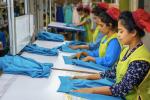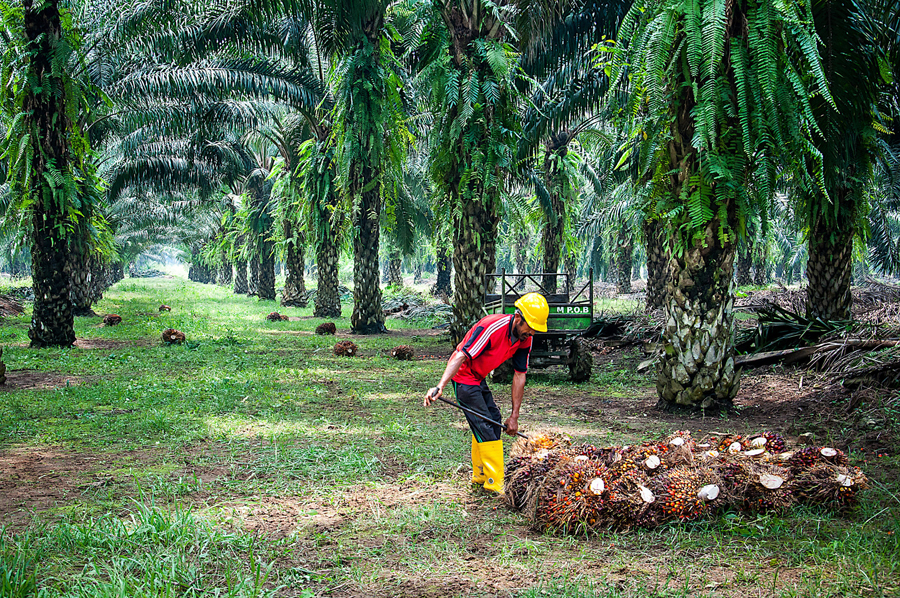However, due to irrational popular political decisions, we are far from achieving these objectives.
One such irrational and misguided decision is the regrettable and unfortunate ban on the cultivation of oil palms in Sri Lanka.
During a recent book launch, the Hon. Ali Sabry PC, Minister of Foreign Affairs, said that the country is in dire economic straits due to non-scientific, illogical decisions taken by successive governments, and that, henceforth, policy must be based on facts, logic and scientific evidence.
This is a laudable statement, and we as Sri Lankans should begin to work towards ensuring that we are never again held back by myopic and irrational policies.
The oil palm is presently the most productive crop known to man.
While only 2% of total cultivated land, globally, is allocated to its cultivation, palm oil accounts for 35% of the world’s total vegetable oil requirements.
Moreover, it is also considered as the single-most versatile plant oil, as apart from its use as a cooking oil, it has uses across an array of products as diverse as skincare creams, shampoos, soaps, detergents, margarine, confectionaries, biscuits, chocolates, bakery products, milk powder and even beverages such as cola.
Its versatility cannot be overstated, and with growing populations around the world, the demand for these products, and thus for palm oil, are continually increasing.
Initially, cognizant of the crop’s many benefits, Sri Lanka encouraged Regional Plantation Companies (RPCs) to proactively expand oil palm plantations and invest in research and development.
This gave rise to a small but promising local palm oil industry, beginning in the late 60s.
By 2016, RPCs received approval to import oil palm seeds, on the recommendations of Cabinet subcommittee on Economic management and government mandated the Coconut Research Institution (CRI) to provide technical support for sustainable cultivation of palm oil.
Accordingly CRI published guidelines expanding oil Palm cultivation and investments of up to LKR 500 million were made accordingly, by RPCs, aligning themselves with the government’s stated plan to increase the extent of oil palm cultivation from 3,157 Ha, at the time, up to a total of 20,000 Ha, or 3% of the total cultivated land among tea, rubber and other crops (NOT total land area) in Sri Lanka.
As a result, by 2018, RPCs were collectively generating revenues of LKR 2.03 billion from palm oil, a stark contrast to the much more widely grown crop, rubber, which only generated LKR 107 million in the same period.
Thus, relying on assurances of continued government support, RPCs committed a further collective investment of LKR 500 million towards the importation of planting material.
However, in 2020 there was a sudden reversal of government policy, and a ban was introduced on new oil palm cultivation; a decision based entirely on non-scientific advice proffered by non-professionals with zero experience in agriculture, much in a similar vein to the delusional ban on chemical fertilizers, the repercussions of which we are seeing in the ongoing food shortages in Sri Lanka.
In contrast, India is expanding the extent of oil palm cultivation to 2 million hectares, aiming to meet the ever growing demand for vegetable oil and taking in the considering the population increase.
Perhaps, we should take practical lessons from India, instead of making grandstanding decisions and then running to them for financial support when our industries and economy collapse, directly as a result of such poor decisions!
Harvested year round, oil palms produce on average 15 to 20 tonnes of fruit per hectare – far more than soya, rapeseed and sunflower.
This then means that oil palms require 10 times less land than the other three major oil-producing crops, soya, rapeseed and sunflower, to produce similar yields in nominal terms.
In addition to the 3.74 tonnes of palm oil yielded per hectare, 0.4 tonnes of palm kernel oil and 0.4 tonnes of palm kernel cake are also produced from the fresh fruit bunches (FFB).
All of which are of economic importance and have valuable uses.
Today, in Sri Lanka, oil palms barely cover 12,000 hectares of land, but have still played a pivotal and significant role in Sri Lanka’s plantation sector.
This crop has significantly supplemented revenues, and saved valuable foreign exchange, while also drastically improving the livelihoods of communities on and around estates.
In 2021, Sri Lanka’s annual edible oil requirement was around 275,000 Metric Tonnes (MT) and the total edible oil production was 72,769Mt.
Coconut oil production was 43,038 Mt which depends on annual coconut production.
Crude palm oil and palm kernel oil production was 29,731.
The balance 74% is sourced from the global palm oil giants Indonesia and Malaysia, who produce 80% of the world’s palm oil.
Imagine the significant savings of foreign exchange, and the concurrent creation and addition of value to the local economy, and economic emancipation in rural areas, that could be had by simply adopting more liberal and constructive policies towards oil palm?
Global palm oil industry give birth to successful small holder farmer schemes that improved the livelihood of rural farmers and contributed to the reduction of unemployment, poverty alleviation and economic growth in countries such as Malaysia and Indonesia.
India too having the same approach. Isn’t it a good opportunity to available to Sri Lanka rural economies and address the unemployment?
It is not too late heed the, liberalize the industry and put Sri Lanka on a sustainable path towards edible oil self-sufficiency, and return to our solid roots of sustainable agriculture and prosperity through ingenuity and the embrace of progress and policies driven by logical, rational and scientific arguments, and not whims, fancies and political grandstanding!























